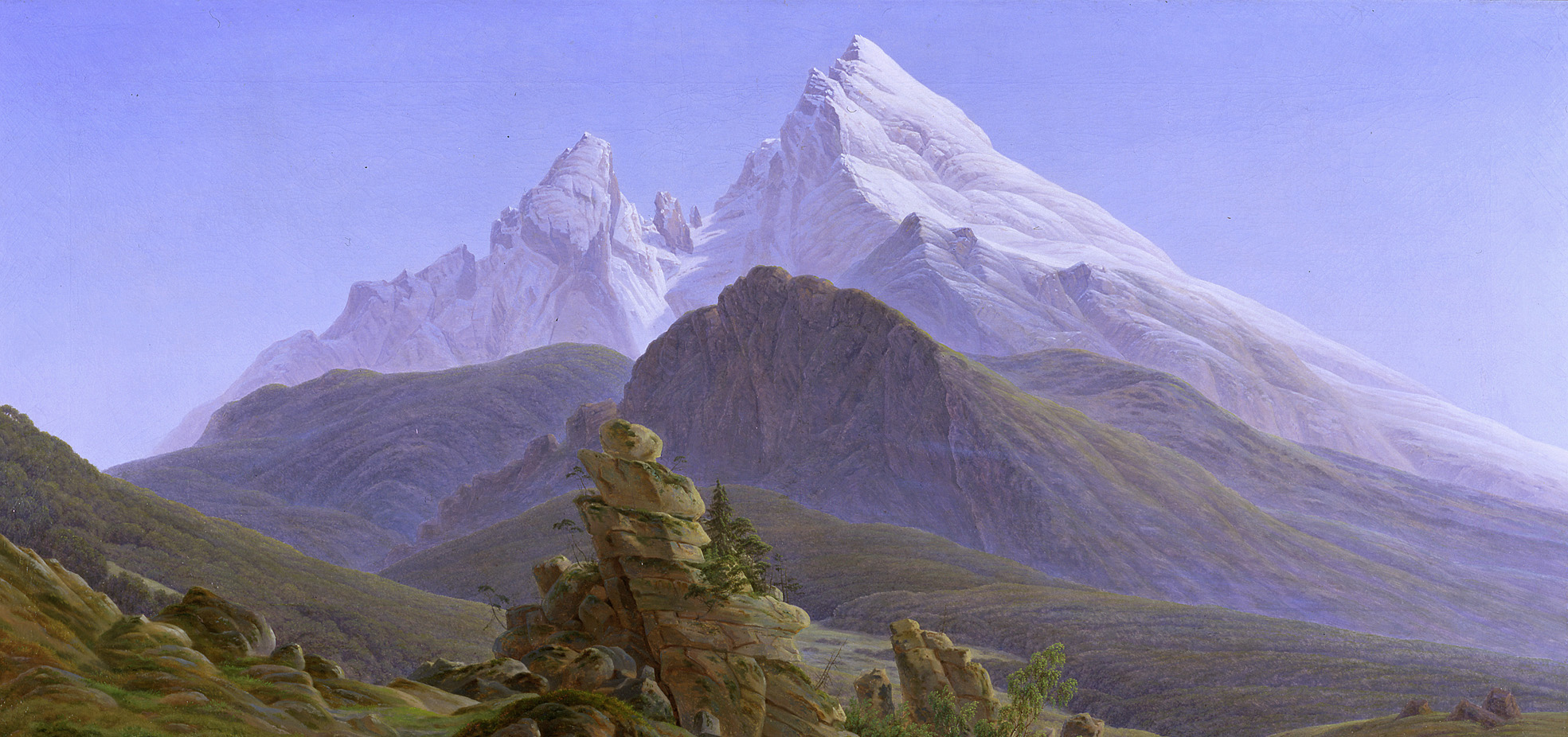Ludwig Richter experienced the Watzmann summit as a “Gothic cathedral with silver snow peaks reaching to the sky blue” during his stay in Berchtesgadener Land. A little later he created his painting “The Watzmann”, which in turn prompted Caspar David Friedrich to paint his own version of the impressive mountain.
This probably most important high mountain landscape of the Romantic era was once again secured for the Nationalgalerie thanks to the patronage of DekaBank. Friedrich's “Watzmann” was purchased from Jewish ownership for the collection in 1937 and was subject to restitution. After successful negotiations with the descendants of the previous owner, the large-format work was reacquired. On this occasion, the National Gallery is dedicating an exhibition to Friedrich's painting that places this mountain landscape in its immediate contemporary context: impulses, influences and backgrounds to the creation and meaning of the "Watzmann" are to be shown.
The confrontation with works, especially by painters from the Dresden circle around Friedrich, will demonstrate different artistic views, but also make clear the shared enthusiasm for the high mountains.
Solemn magnificence and complete solitude made Friedrich's “Watzmann” the epitome of the romantic depiction of mountains. As if viewed through a telescope, the summit of the Watzmann appears in its luminous, almost glass-like clarity, immediately close, seemingly tangible and at the same time distant, like a symbol of divine majesty. Raised to an icy aloofness and idealized in their entire, almost transparent form, the rock faces shimmer in an almost dematerialized manner. Compositionally, the bright mountain arises from a single, richly varied movement. The pyramidal shape culminates in the brilliant white of the ice, an image idea that Friedrich had already developed in 1824, a year before the “Watzmann” was created, in his famous picture “Eismeer. The Failed Hope” developed.
At the Berlin art exhibition in 1826, Friedrich brought the two works together. Here as there, eternal ice in the bright light, in the “Arctic Sea” with shipwreck a natural spectacle of destruction, in the “Watzmann” the mountain appears remote against a blue sky. Both are images of majesty and terror, of the grandeur and power of nature, beyond human comprehension. It is thanks to the Hamburger Kunsthalle that the “Eismeer” can once again be shown together with the “Watzmann” in Berlin.
Caspar David Friedrich, who created the most important high mountain landscape of the Romantic era with the “Watzmann”, never saw the wild mountain world of the Alps, which was still largely untouched at the time. Born in the port city of Greifswald in 1774, Friedrich grew up on the Pomeranian Baltic Sea coast. In 1798, the 24-year-old artist settled in the Saxon residential city of Dresden, where he lived until his death in 1840, interrupted by several trips to his home Baltic Sea coast, the Giant Mountains and the Harz Mountains. A trip to Switzerland, the legendary “land of freedom” and the “sublime nature” of the high mountains, planned for 1808 did not take place.
Since comprehensive scientific and artistic exploration of the Alps began in the second half of the 18th century, no mountain in Europe has had greater appeal. Now the supposed irregularity of the Alps gave those interested in geology insight into the elementary laws of this fascinating prehistoric nature. Artistic description, scientific research and literary transfiguration promoted a Europe-wide enthusiasm for the Alps.
